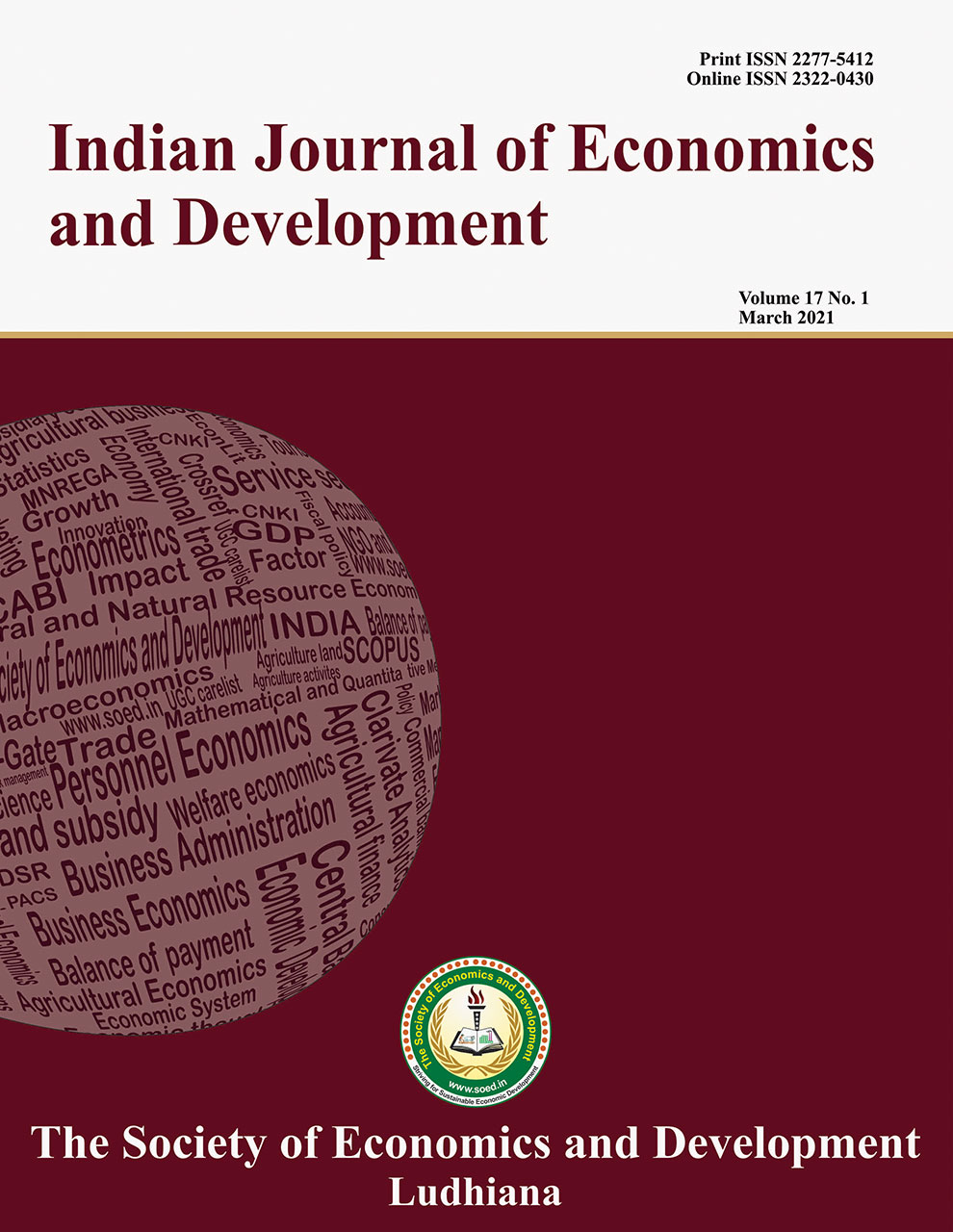Happy Seeder Technologies in Punjab State of India: Lessons Learned from Farmers

Price: ₹ 500
Author: Davinder Singh and Prabhjot Kaur
Author Address: Ph.D. Scholar and Professor Department of Extension Education, Punjab Agricultural University, Ludhiana-141001
Keywords: Conservation agriculture, happy seeder, residue retention, sustainable farming
JEL Codes: Q16, Q24, Q55
Abstract
Happy seeder has emerged as a way for a sustainable
production system under the present rice-wheat cropping system in Punjab. The
present survey was conducted during season 2019, comprising 50 randomly
selected farmers on happy rabi seeder technology in Punjab, India, to
understand the status, economic benefits, ease of access and complexity of
technology, recommended practices (POP) followed and reasons for the
non-adoption of recommended practices. The majority of the respondents used
happy seeders in their field on a rent basis. The majority of the respondents
(84 percent) observed a decrease in yield and net income by adopting a happy
seeder, whereas input expenditures were reduced while using a happy seeder. The
survey further revealed that the majority of the respondents applied more than
the recommended dose of nitrogenous fertilizers and more seed rate. Refinement
needs to be done in recommendations of use of happy seeder. Necessary
incentives by way of subsidy and low rent on happy seeders to increase adoption
of this technology should be made available by the concerned agencies.
Description
Indian Journal of Economics and Development
Volume 17 No. 4, 2021, 910-916
DOI: https://doi.org/10.35716/IJED/20157
NAAS Score: 5.15
Indexed in Clarivate Analytics (ESCI) of WoS
Indexed in Scopus
UGC Approved



